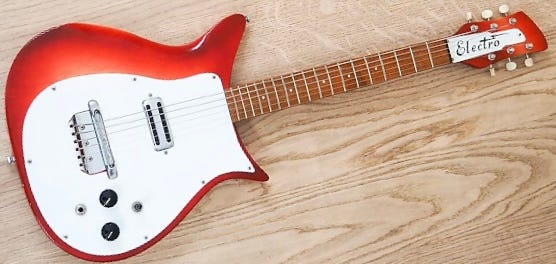
It doesn’t take long in the Rickenbacker fandom world to encounter the private label Ryder and Electro ES-16 and ES-17 student guitars—respectively a rebadged Rickenbacker 1000 and 425. But far fewer are aware of those guitars’ predecessor: the Contello/Symfonia Grand. Let’s correct that!
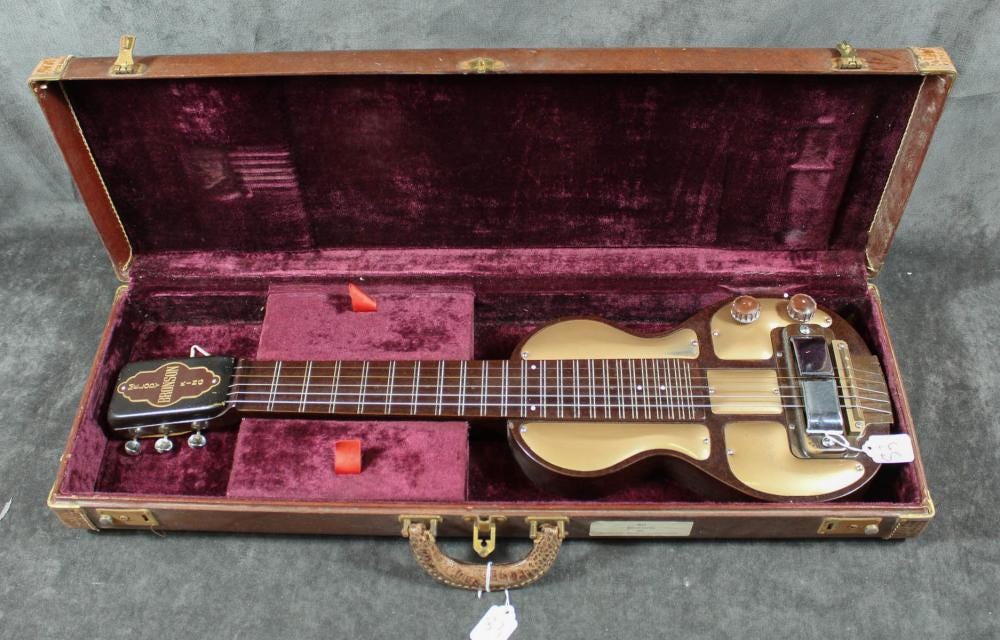
Rickenbacker actually began dabbling in the private label world for student level instruments all the way back in the 1940s, slapping a “Bronson Melody King” label on the venerable BD-6 lap steel for the Bronson Music School. So it was not a new concept when they were approached in 1962 by the Mann Music School—headquartered right there in Santa Ana!—about student guitar and amp combos for both lap steel and “Spanish” guitars. And after the negotiations were done Milton Mann placed an order for 50 lap steel/amp and 50 guitar/amp combos.
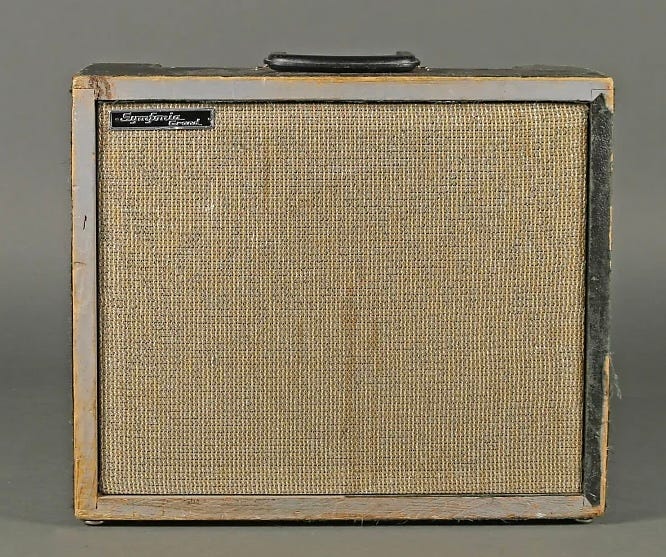
The amp part of the combo was simply the 6 watt/12 inch speaker Rickenbacker B9A rebadged as “Symfonia Grand”. The guitar (internal designation 624-460) was…something different.
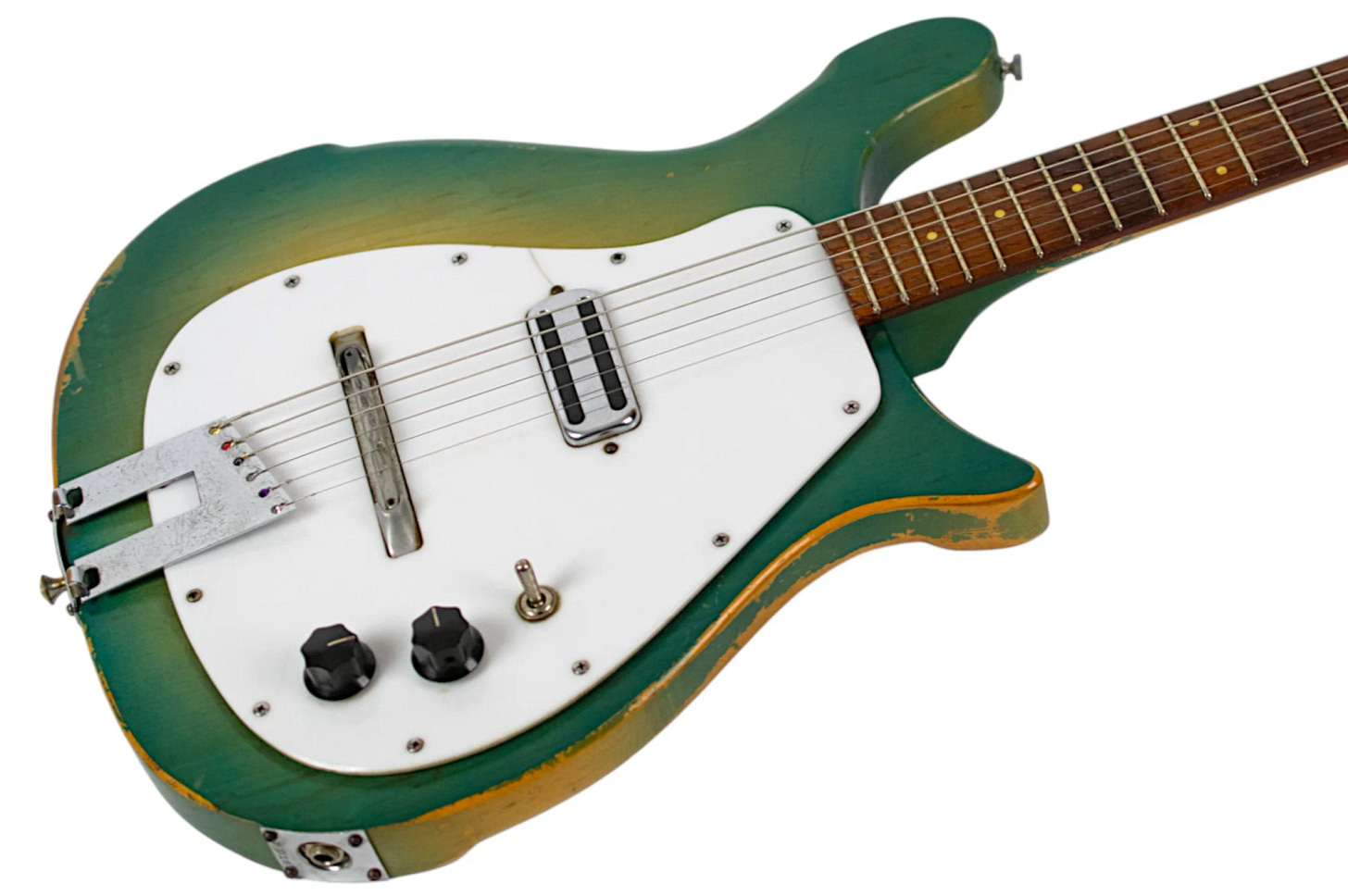
While the single pickup 425 was used as a foundation, the guitar featured a number of differences. For comparison’s sake, here’s a contemporary 425:

The pickup location and floating compensated bridge are about the only things the two guitars have in common. The Symfonia Grand had a longer, rounded over top horn instead of the cresting wave, a different pickguard—resting on grommets to create room for the bridge base—a trapeze tailpiece, a different control orientation (although the wiring harness was the same), and, curiously a side mounted output jack—the only solidbody cresting wave family guitar ever thusly equipped. It even got its own unique headstock and truss rod cover:
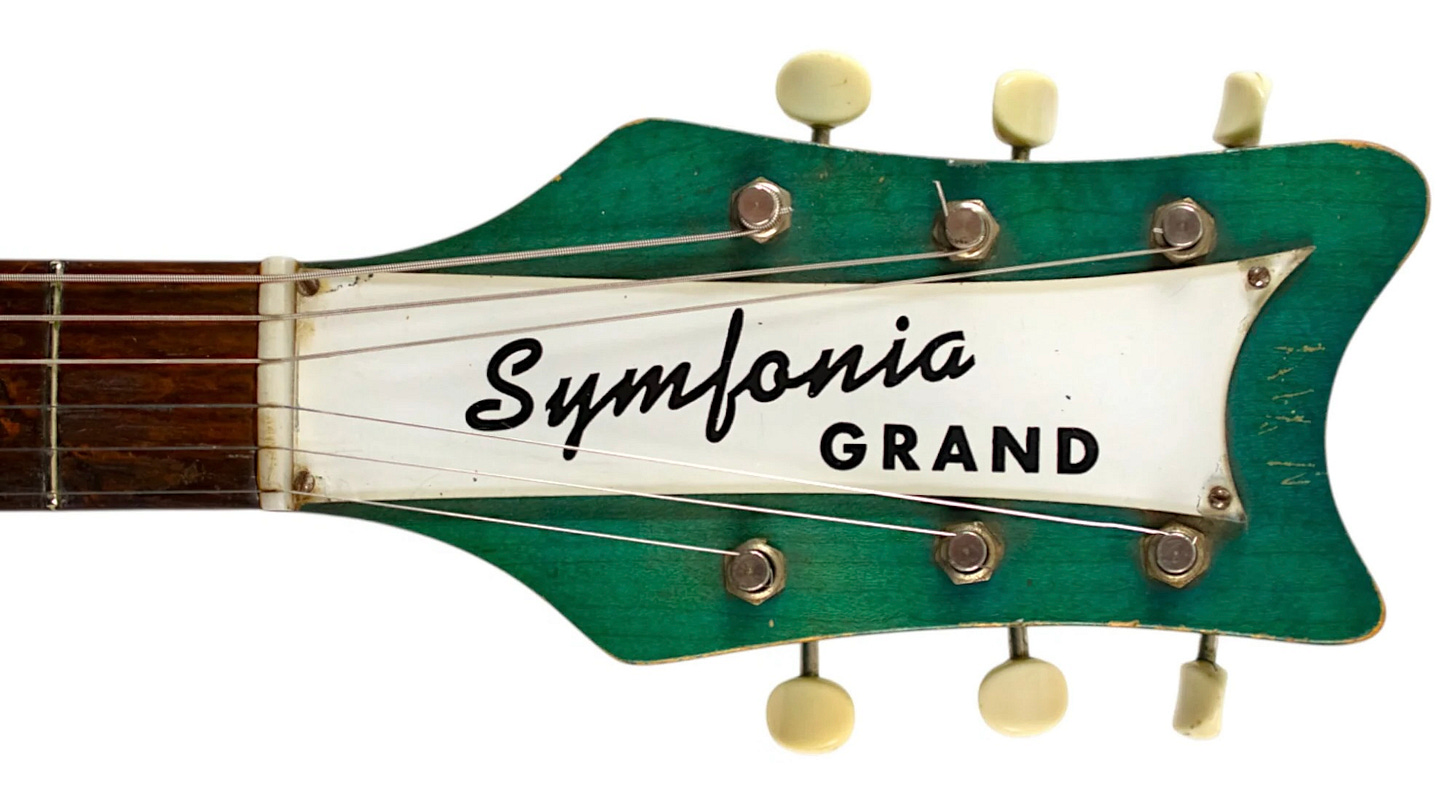
And we haven’t even talked about that finish yet!
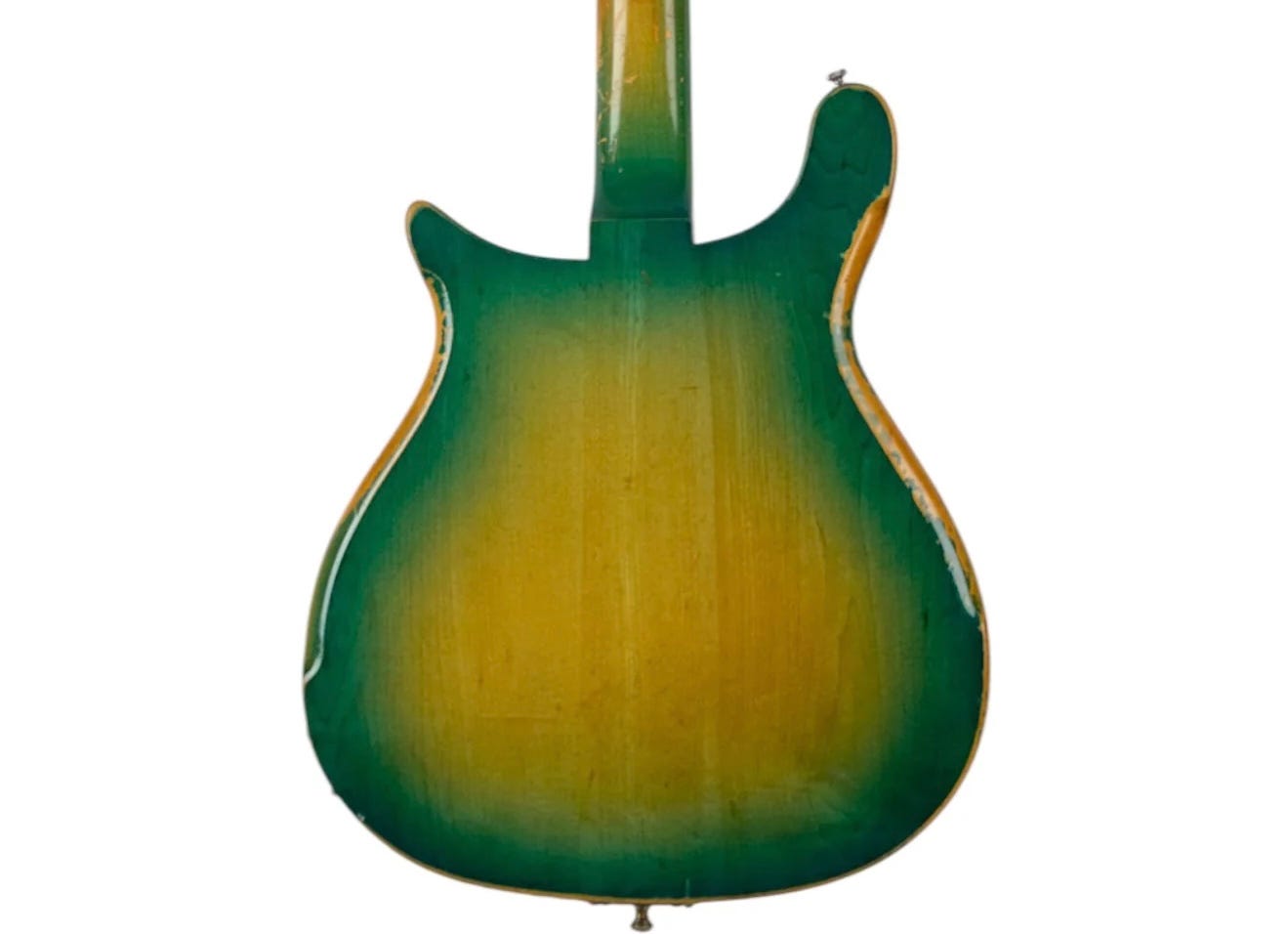
But don’t worry if the green is “too much” for you. It also came in a slightly less lurid blue burst. Expert John Minutaglio contends there’s only one color, and the various shades are a result of lighting/ambering/application. He’s the expert, but I dunno…
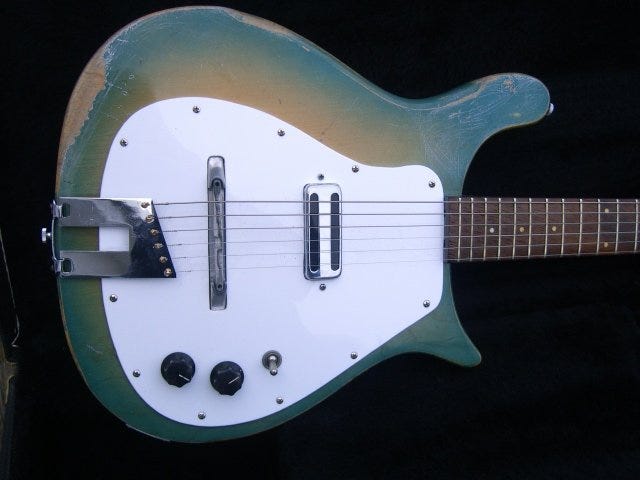
Now the title of this article is “The Contello and Symfonia Grand” and I haven’t mentioned “Contello” yet. Let’s do that real quick. Now to be clear, it’s the same guitar for the same customer. They just changed their mind after production had already started. You see, Mann Music School started out as an accordion school, and imported student accordions under the “Contello” (an amalgamation of accordionists Dick Contino and Tony Lovello’s names) brand name.
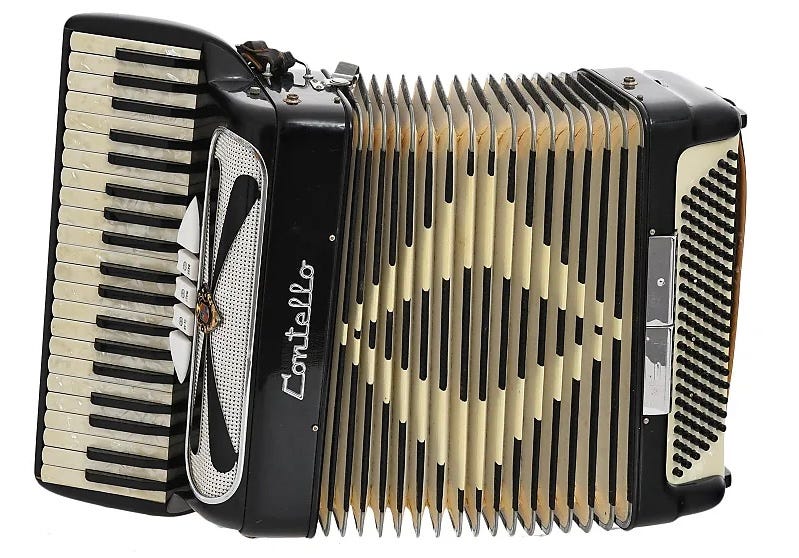
And so the first 11 guitars produced for Mann wore this established brand name—and the green burst finish.
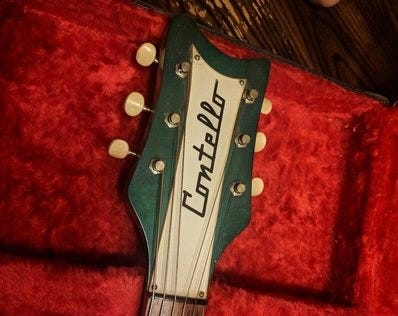
Why Mann changed his mind on the name and the color we don’t know. But he did, and guitars 12-50 were branded Symfonia Grand instead of Contello. The serial numbers on the Contellos run from G01 to G11, while the Symfonia Grands run from BD12 to BD50.
Now, according to Martin Kelly’s excellent book the color changed from green to blue along with the name change, but we know that may not be exactly correct because the green guitar featured above is a) serial number BD16, b) branded Symfonia Grand and c) maybe they’re all really the same color like John Minutaglio says? I CAN say least a few very green burst Symfonia Grands are likely out there. The majority, though, do appear to be more blue burst—although they have ambered over time.
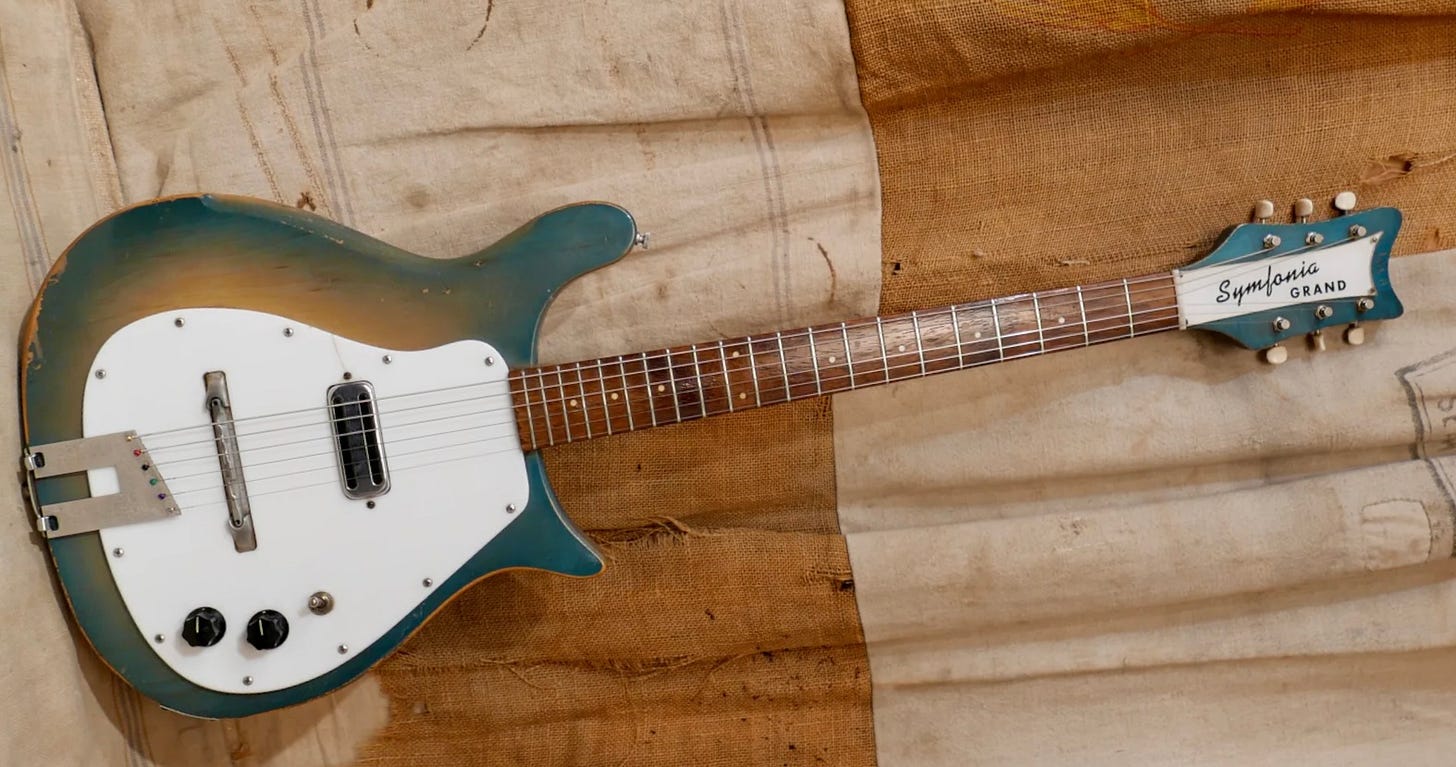
There would be no second order from Mann. But the idea proved appealing enough that Rickenbacker began offering “ready-to-go” Electro-branded student guitar combos the next year, and was more than willing to accommodate Ryder Music School’s request when they came knocking shortly thereafter. Electro guitars would be offered until the early 1970s, at which point the private label era would end—apart from a special run of ES-16s in 1983.
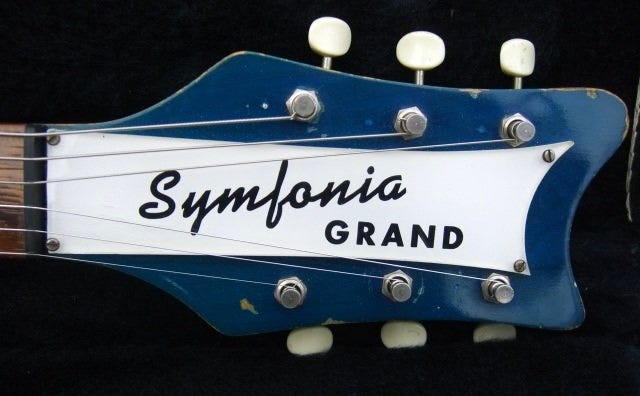
But the Contello/Symfonia Grand came first—and were certainly the most unique of the private label guitars! Want to learn more about…everything else? Check out the rickenbacker101 site map and see what’s already been covered! Have a suggestion about what we should tackle next? Drop it in the comments and we’ll add it to the queue.
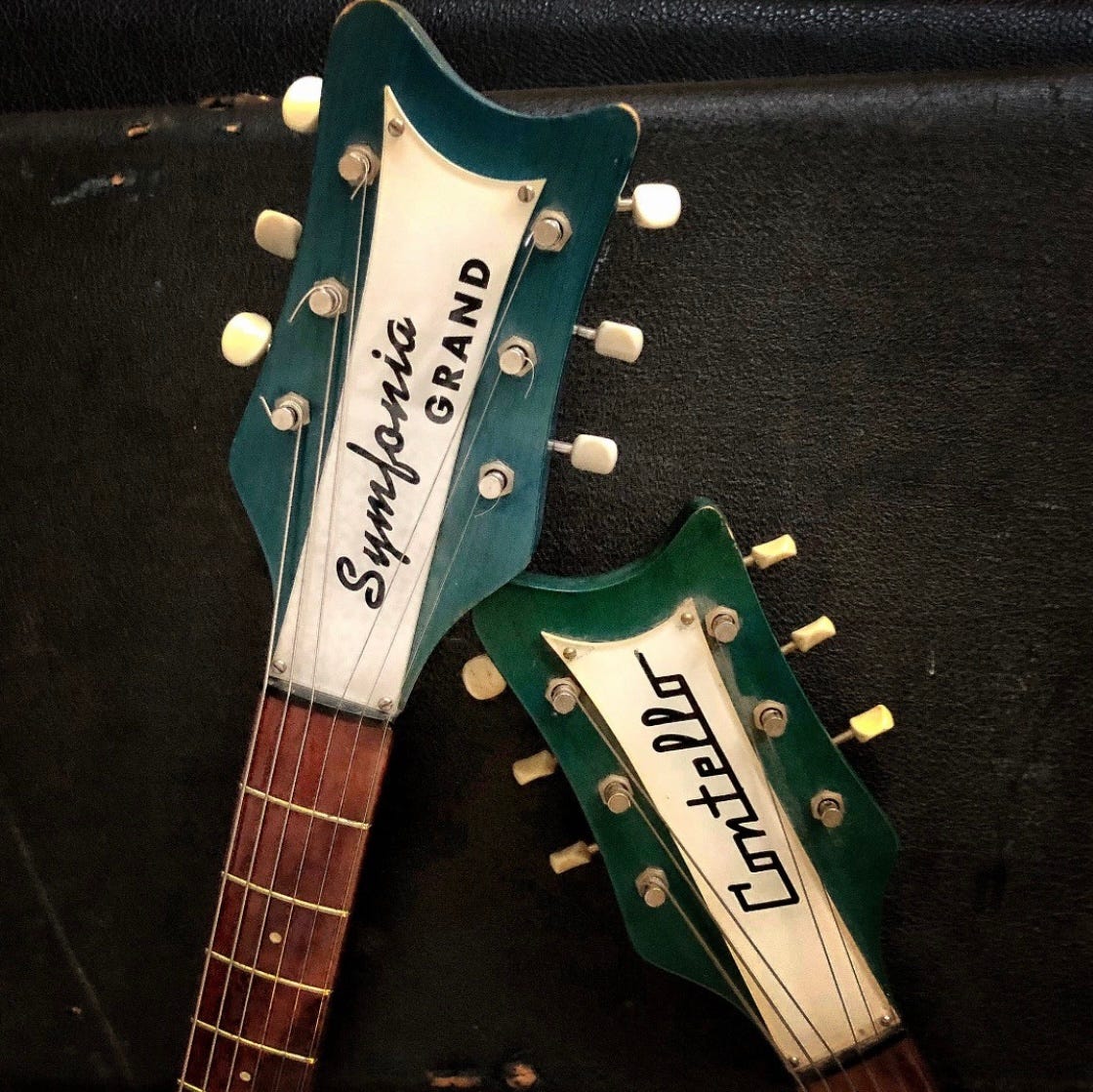




In all of my years based in Santa Ana, California, I spent years searching pawnshops, music stores and thrift stores, I never encountered any of these guitars.
re: But don’t worry if the green is “too much” for you. It also came in a slightly less lurid blue burst.
There's not two colors. The tint varies slightly due to the spray (think 'light FG' vs 'dark FG', even in the same year), and the aging/tinting. Pictures don't tell the story. I could photo one 'blue' or photo one 'green' -> it's the lighting (AKA look at my insta). Put a Contello side by side with a SG and look at the body and the back - they're the same color. The photo of my headstocks prob led to ppl thinking there's two colors - in reality the headstocks are shaded a bit different but the bodies are the same color.... And I tweaked the tint on that photo or put a aged filter on it - its not representative of in-person... its also got a 'heavy' vignette on it - which is why the SG headstock looks darker on the top, which it isn't.
re: The serial numbers on the Contellos run from G01 to G11, while the Symfonia Grands run from BD12 to BD50.
^ q: what's the source on that - I'd like it to be true but I doubt it...
re:
The Symfonia Grand had a longer, rounded over top horn instead of the cresting wave, a different pickguard, a trapeze tailpiece, a different control orientation (although the wiring harness was the same), and, curiously a side mounted output jack—the only solidbody cresting wave family guitar ever thusly equipped.
More:
- the pickguard is on grommets, like a late 360F
- the bridge is held on w/ tape and 'squished' by the PG and strings (like an Astro)
- The pickguard is '3d' -> it has a big block of plastic on the underside.
- These (like all the other private label guitars) have a model reference -> It's a Symfonia Grand model 624-460
And:
- they're not worth $8k. :)